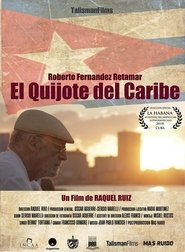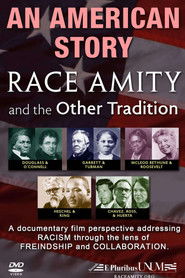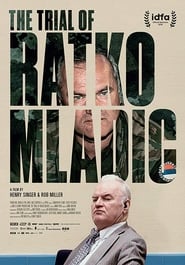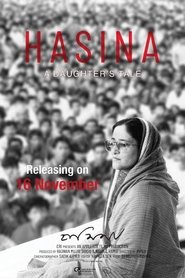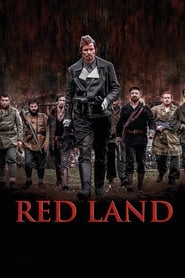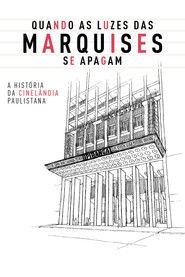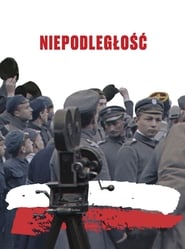New History Movies on Tub Tv - Page 269
-
El Quijote del Caribe
2018
This documentary film explores the life of Cuban revolutionary poet Roberto Fernández Retamar, who, from the Casa de las Américas, has served as a link between the revolution and leading contemporary writers and thinkers. -
The Orphanage
2018
The Orphanage
2018
star 6France, 1911. Louise Perreau, struggling financially to raise her son Gaston, gets a new job in Paris that brings her hope for a better life. -
National Theatre Live: The Madness of George III
2018
star 6.3It’s 1786 and King George III is the most powerful man in the world. But his behaviour is becoming increasingly erratic as he succumbs to fits of lunacy. With the King’s mind unravelling at a dramatic pace, ambitious politicians and the scheming Prince of Wales threaten to undermine the power of the Crown, and expose the fine line between a King and a man. -
An American Story: Race Amity and The Other Tradition
2018
In contrast to the lens that focuses exclusively on the racist traditions that are rooted in America’s social history, the moral counterweight of close, loving, friendship and collaboration, which have always been present in our history, represents “the other tradition.” This “other tradition” is a source of inspiration and presents models of behavior that are instructional and include unknown and uncelebrated legacies to be absorbed and emulated across generations of present day Americans. The documentary discusses the “better in us” a needed collective perspective in the current climate of national disunity across racial, religious, and political lines. This has significant implications for addressing public issues from immigration to health care and the myriad of governmental, educational, business, and religious challenges that we must successfully meet to weave the fabric of unity which is indispensable to survival as a nation. -
On The Left
2018
On The Left
2018
"On The Left" it's a memory of my childhood frozen in my mind; that passed outside of my house, in the Municipality of Sopó, Cundinamarca (Colombia), and tells some experiences that I lived with a man who had most monster face than human. "... I discovered that when I was little I could talk to objects." And it's to my nightstand that I decided to tell this story. What I could not say in words at some time, but I shouted with time, now asks to be brought to light... I'm left-handed, but I wrote this story with my eyes. -
The Trial of Ratko Mladic
2018
star 7.2The war crimes trial of Ratko Mladic, accused of masterminding the murder of over 7000 Muslim men and boys in Srebrenica in the 90s Bosnian war, the worst crime in Europe since WW2. -
Australia Says Yes
2018
Australia Says Yes
2018
star 10Packed with drama, high emotions and cliff-hanger moments, Australia Says Yes is the intimate and personal history of struggle and perseverance that propelled Australia to say Yes to marriage equality. The film shows how a group of determined individuals fought tirelessly against unjust laws that treated LGBTIQ people as second-class citizens, creating a movement that saw them go from criminals to legally equal over the course of five decades. -
Goya's Skull
2018
Goya's Skull
2018
star 7.5Bordeaux, France, 1828. Spanish painter Francisco de Goya y Lucientes dies in his French exile on April 16th and is buried in the local cemetery. Nobody, not even his only living son, Javier, claims his body. In 1888, after years of paperwork, the Spanish consul Pereyra finally obtains permission to exhume Goya's remains with the purpose to bury them in Spain. When the crypt is opened, the gravediggers make a discovery as macabre as it is stunning… -
Hasina: A Daughter's Tale
2018
The film covers the assassination of Hasina's father Sheikh Mujibur Rahman along with most of her family member in 1975. -
Green Book
2018
Green Book
2018
star 8.2Tony Lip, a bouncer in 1962, is hired to drive pianist Don Shirley on a tour through the Deep South in the days when African Americans, forced to find alternate accommodations and services due to segregation laws below the Mason-Dixon Line, relied on a guide called The Negro Motorist Green Book. -
JFK: The Lost Assassination Tapes
2018
Hundreds of hours of news reports from the days surrounding the assassination of President Kennedy. -
Elisabeth: Rondo of Love and Death
2018
star 10Takarazuka Revue Moon Troupe 2018 production of the Viennese musical 'Elisabeth' -
Red Land
2018
Red Land
2018
star 6Italy, September 1943. After the armistice and the flight of the King, the war theaters of the North-East see the advance of Tito's partisans. At the center of the story, in this dramatic historical context, the figure of Norma Cossetto, a young Istrian student, barbarously raped, killed and thrown into a foiba by the Tito partisans. -
Dan Cruickshank's Monuments of Remembrance
2018
Dan Cruickshank reveals the extraordinary story behind the design and building of iconic First World War memorials and explores the idea behind the creation of the Commonwealth War Graves Commission. -
The Frozen Fire
2018
The Frozen Fire
2018
star 8Some are called heroes, some villains. Histories get buried and the dead are resurrected. Sometimes a thread of humanity gets drawn from blurred stories. It could clothe the world one day or stitch together a fallen flag. -
We Are Half The World
2018
star 3.8They were, at best mocked or ridiculed, at worst incarcerated, tortured, or even beheaded. But they would not be deterred. For decades ten thousands of women in Germany, Great Britain, in France, the U.S. and many other countries fought for their right to vote. Some used the institutions, others turned into media savvy politicians, and still others turned to terrorism, went on hunger strike, or died as martyrs. 100 years later we tell a multi-perspective and emotional story of the international fight, against all odds, for women’s suffrage as an important step towards equal rights. -
When The Marquees' Lights Go Out
2018
With archive footage and testimonials from former filmgoers, a story of movie theaters that were located on the avenues of São João and Ipiranga and its surroundings, in São Paulo's city centre. Known as Cinelândia Paulistana, this area lived its heyday in the 1950s, reaching more than 15 cinemas in full operation. -
WWI's Secret Shame: Shell Shock
2018
From shell shock in WWI to PTSD today many of those who made it home from war were left mentally scarred and traumatised. Historian Dan Snow explores the on-going mental health crisis in veterans. -
Niepodległość
2018
 Netflix
Netflix
 Amazon Prime Video
Amazon Prime Video
 Apple iTunes
Apple iTunes
 Apple TV Plus
Apple TV Plus
 Disney Plus
Disney Plus
 Google Play Movies
Google Play Movies
 Paramount Plus
Paramount Plus
 Hulu
Hulu
 HBO Max
HBO Max
 YouTube
YouTube
 fuboTV
fuboTV
 Peacock
Peacock
 Peacock Premium
Peacock Premium
 Amazon Video
Amazon Video
 The Roku Channel
The Roku Channel
 AMC+
AMC+
 Kocowa
Kocowa
 Hoopla
Hoopla
 The CW
The CW
 Vudu
Vudu
 Starz
Starz
 Showtime
Showtime
 PBS
PBS
 Pantaflix
Pantaflix
 FXNow
FXNow
 Tubi TV
Tubi TV
 Kanopy
Kanopy
 Comedy Central
Comedy Central
 Crunchyroll
Crunchyroll
 Microsoft Store
Microsoft Store
 Redbox
Redbox
 Sun Nxt
Sun Nxt
 ABC
ABC
 DIRECTV
DIRECTV
 Crackle
Crackle
 Fandor
Fandor
 Plex
Plex
